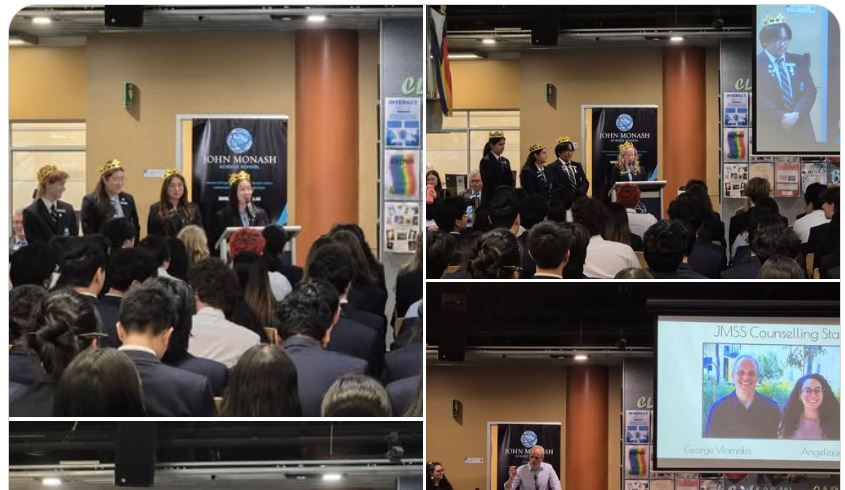
Since its founding in 2009, John Monash Science School, which is located on the Clayton campus of Monash University, has gradually established itself as one of Australia’s most prestigious secondary science education centers. Its atmosphere is remarkably reminiscent of a flourishing research facility, with innovation and experimentation permeating every area. Here, students are surrounded by a culture that values scientific curiosity and carefully cultivates it into practical skills.
Getting in is no easy task. The EduTest, a rigorous test intended to evaluate mathematical reasoning, scientific aptitude, and creative problem-solving skills, is taken by thousands of students in Year 10. Only the top 600 get interviews, and 200 spots are offered to a carefully curated group of them. By preventing any one school from controlling the intake, the “3% rule” fosters a diverse range of backgrounds and viewpoints. This diversity has been especially helpful in creating a collaborative and innovative environment.
John Monash Science School – Key Information
| Attribute | Details |
|---|---|
| Name | John Monash Science School |
| Location | 39 Innovation Walk, Clayton VIC 3800, Australia |
| Founded | 2009 |
| Type | Government-funded, co-educational, academically selective, specialist science secondary school |
| Founders | Government of Victoria and Monash University |
| Principal | Andrew Chisholm |
| Enrolment | Approximately 640 students |
| Year Levels | 10 to 12 (VCE Program) |
| Houses | Doherty (Blue), Flannery (Green), Blackburn (Purple), Wood (Silver) |
| School Colours | Navy Blue, White, Sky Blue |
| Specialisation | Science, Mathematics, Emerging Technologies |
| Website | www.jmss.vic.edu.au |
The curriculum in the classroom combines the foundations of biology, chemistry, and physics with a variety of electives that are incredibly good at igniting interest. Students are encouraged to approach science as explorers rather than memorization learners through courses like terraforming Mars, marine biology, astrophysics, and nanotechnology. The year-long project known as Year 10’s Extended Experimental Investigation culminates in a Science Fair that frequently has more of the feel of a professional research showcase than a school function.
The school gives its students access to state-of-the-art labs, specialized equipment, and even first-year university courses by utilizing its special partnership with Monash University. Graduates entering competitive STEM fields have an exceptionally clear advantage thanks to this pathway. This system, which emulates the mentorship practices of prestigious science schools abroad, has significantly increased students’ preparedness for higher education.
Beyond colors and mascots, the house system honors Australian scientists like Tim Flannery, Elizabeth Blackburn, Fiona Wood, and Peter Doherty. Through academic competitions, athletic events, and cultural events, it cultivates community spirit, loyalty, and leadership. One of the most memorable parts of their time at JMSS, a social structure that is highly adaptable in fostering both academic and personal growth, is the camaraderie that is fostered here, according to students.
JMSS’s outreach initiatives increase its impact well beyond Melbourne. The NBN Virtual School of Emerging Sciences uses a model that is very effective at removing geographical barriers to provide students in remote areas with real-time access to specialized science courses. Programs like “Little Scientists – Big Science” pair primary students with Year 10 mentors to foster the love of discovery at a young age, and the Regional Science Exchange brings rural students into the JMSS environment for immersive learning.
The school continuously performs exceptionally well academically. It frequently ranks among the best in Victoria for Algorithmics, Chemistry, and Specialist Mathematics, and first for VCE Physics and Environmental Science. These findings are more than just statistics; they reflect a culture of accuracy, perseverance, and curiosity that has greatly shortened the time between high school coursework and the demands of science at the university level.
Its educational philosophy is physically expressed in its architecture. Rigid classroom structures are replaced by open learning commons, which promote flexible collaboration. From data-logging experiments to live-streamed lectures with scientists from different continents, technology is seamlessly incorporated into the classroom. This flexibility has greatly accelerated the learning process for the development of critical thinking and problem-solving abilities.
Alumni frequently consider their time at JMSS to be a time when their goals came to fruition. Others have pursued careers in medicine, engineering, or policymaking; still others have gone on to research positions, start-ups, or academic fellowships. Graduates of the school have recently made contributions to research in areas that are especially cutting edge and essential to Australia’s future: artificial intelligence, medical technology, and renewable energy.
JMSS’s influence extends beyond personal accomplishments. It has inspired similar models throughout the nation and helped redefine the potential of specialized secondary education. It is appropriate to draw comparisons to esteemed international establishments like King’s Maths School in London or the Bronx High School of Science in New York. JMSS has shown that there can be quantifiable and transformative outcomes when gifted students are placed in an environment that fosters intellectual growth.
